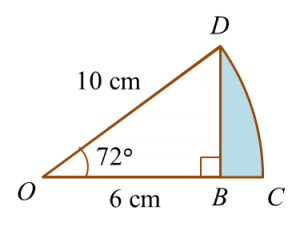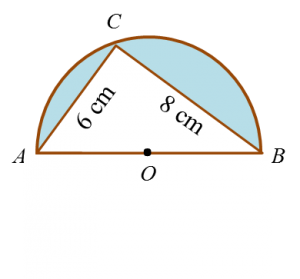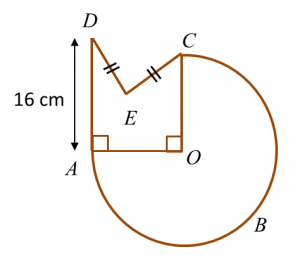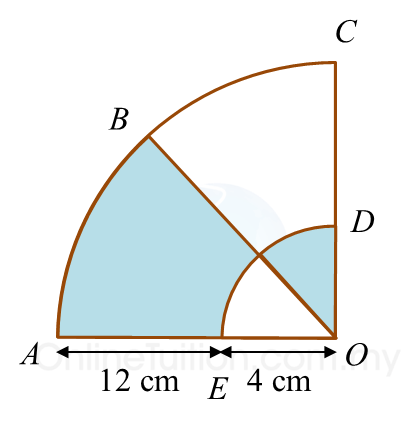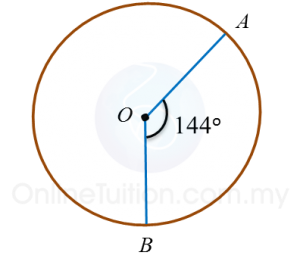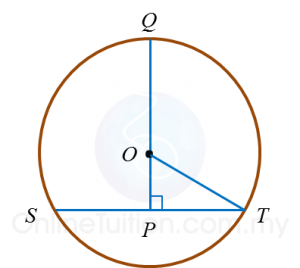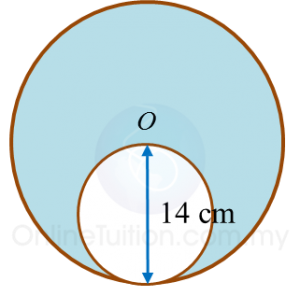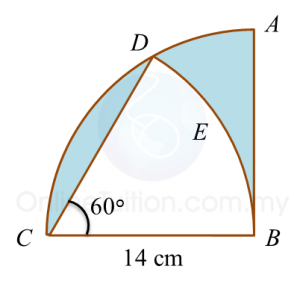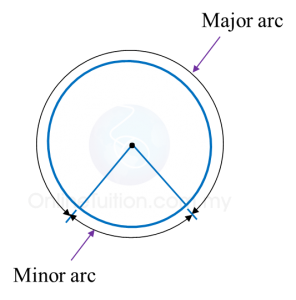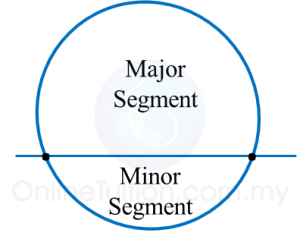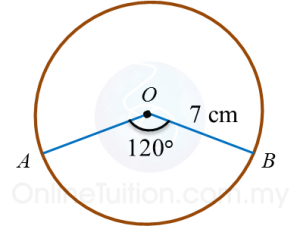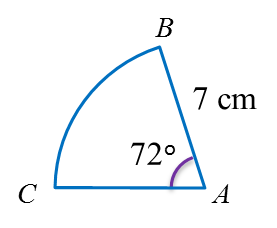Question 11:
The Town Council plans to build an equilateral triangle platform in the middle of a roundabout. The diameter of circle RST is 24 m and the perpendicular distance from R to the line ST is 18 m. as shown in Diagram below.
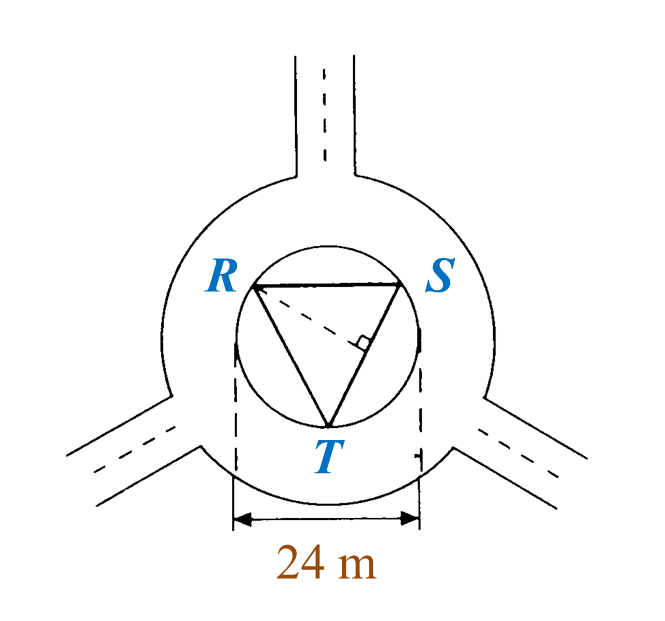 Find the perimeter of the platform.
Find the perimeter of the platform.
Solution:
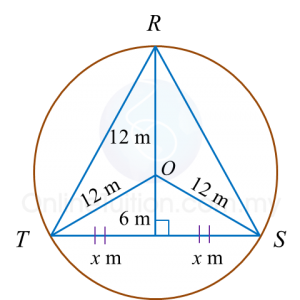
Given diameter = 24 m
hence radius = 12 m
O is the centre of the circle.
Using Pythagoras’ theorem:
x2=122−62x=√144−36 =10.39 mTS=RS=RT =10.39 m ×2 =20.78 mPerimeter of the platformTS+RS+RT=20.78×3=63.34 m
The Town Council plans to build an equilateral triangle platform in the middle of a roundabout. The diameter of circle RST is 24 m and the perpendicular distance from R to the line ST is 18 m. as shown in Diagram below.
 Find the perimeter of the platform.
Find the perimeter of the platform.Solution:

Given diameter = 24 m
hence radius = 12 m
O is the centre of the circle.
Using Pythagoras’ theorem:
x2=122−62x=√144−36 =10.39 mTS=RS=RT =10.39 m ×2 =20.78 mPerimeter of the platformTS+RS+RT=20.78×3=63.34 m
Question 12:
Amy will place a ball on top of a pillar in Diagram below. Table below shows the diameters of three balls X, Y and Z.


Which ball X, Y or Z, can fit perfectly on the top of the pillar? Show the calculation to support Amy’s choice.
Solution:

Let the radius of the top of the pillar=r cm.O is the centre of the circle.In Δ OQR,r2=(r−4)2+82 (using Pythagoras' theorem)r2=r2−8r+16+64r2=r2−8r+80r2−r2+8r=808r=80r=808r=10 cmTherefore, diameter=2×10=20 cmBall Y with diameter 20 cm can fit perfectly on top of the pillar.
Amy will place a ball on top of a pillar in Diagram below. Table below shows the diameters of three balls X, Y and Z.


Which ball X, Y or Z, can fit perfectly on the top of the pillar? Show the calculation to support Amy’s choice.
Solution:

Let the radius of the top of the pillar=r cm.O is the centre of the circle.In Δ OQR,r2=(r−4)2+82 (using Pythagoras' theorem)r2=r2−8r+16+64r2=r2−8r+80r2−r2+8r=808r=80r=808r=10 cmTherefore, diameter=2×10=20 cmBall Y with diameter 20 cm can fit perfectly on top of the pillar.
Question 13:
Diagram below shows a rim of a bicycle wheel with a diameter of 26 cm. Kenny intends to build a holder for the rim.

Which of the rim holder, X, Y or Z, can fit the bicycle rim perfectly? Show the calculation to support your answer.
Solution:

Let the radius of the rim holder=r cm.O is the centre of the circle.In Δ OQR,r2=(r−8)2+122 (using Pythagoras' theorem)r2=r2−16r+64+144r2=r2−16r+208r2−r2+16r=20816r=208r=20816r=13 cmTherefore, diameter=2×13=26 cmRim holder Z with diameter 26 cm can fit the bicycle perfectly.
Diagram below shows a rim of a bicycle wheel with a diameter of 26 cm. Kenny intends to build a holder for the rim.

Which of the rim holder, X, Y or Z, can fit the bicycle rim perfectly? Show the calculation to support your answer.
Solution:

Let the radius of the rim holder=r cm.O is the centre of the circle.In Δ OQR,r2=(r−8)2+122 (using Pythagoras' theorem)r2=r2−16r+64+144r2=r2−16r+208r2−r2+16r=20816r=208r=20816r=13 cmTherefore, diameter=2×13=26 cmRim holder Z with diameter 26 cm can fit the bicycle perfectly.
